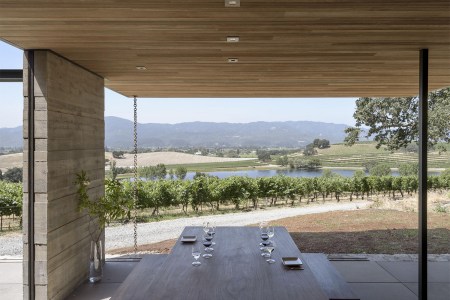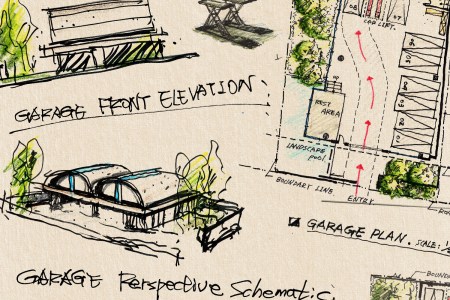For a long time, the real estate market — with its shiny supertalls and fetishization of square footage — has been the physical embodiment of capitalism.
“There’s this sense that the very idea of ‘real estate’ has gotten lost in all the excitement generated by talk of high finance and asset classes,” says Jordan Relfe, a thirty-something with a career in property surveyance and management. “But that misses the point of what real estate’s purpose is primarily all about: to provide spaces for people to live and work in. It’s about people.”
Relfe is co-founder, along with his friend Adam Hinds, of a pioneering UK-based consulting company called Lifeproven. Its objective? To persuade developers that their residential and office buildings — whether new or retro-fitted — can be designed to have a positive effect specifically on the well-being of their occupants.
Most people who works in a corporate environment are familiar with the concept of ESG. “Environmental social governance” is a means of screening policies and decision-making, in order to ensure companies are acting responsibly. In real estate-specific terms, that might mean determining if a building can have a significant social impact — Will it rehabilitate public spaces? Will it provide affordable housing? — or employ more sustainable construction processes, in terms of materials, emissions and energy use.
This sort of regulation makes a difference. But has the experience of being in these buildings experience gotten better? “It should be obvious that if we spend all our time in these spaces, and we do spend 90% of our lives indoors somewhere, then they should work for us,” says Relfe. “But, so often, they don’t. ESG in property is important, but it still largely overlooks arguably the most important aspect.”
How Quintessa Is Using Architecture to Make Better Wine
When “fighting nature” doesn’t work, concrete fermentation tanks come nextLight, airflow, green space
“Well-being as a quality of building design has a long way to go before it’s widely understood. The property market has been much, much slower in considering well-being as central to a building’s performance,” says Relfe, who admits to having had to deal with a lot of blank faces in the real estate world when he outlines Lifeproven’s ideas. “But it’s not hard to see how certain approaches [for building design and construction] could lead to improvements for the physical and mental health of the people who use them.”
Lifeproven suggests how buildings might be better designed to maximize natural light, airflow, access to green space good acoustic and thermal characteristics, and a better balance between spaces that offer privacy and those that foster social interaction.
One would hope these concepts would be top of mind for any architect or property developer, though don’t bet on it. Critical to Lifeproven’s persuasion efforts, the company has put these positives on a scientific footing for the first time. They measure the success of their buildings using a well-being metric, calculated in conjunction with Dr. Brendon Stubbs, of King’s College, University of London, who’s an authority on all matters biomedical.
This metric is measured against ESG standards set by the World Health Organization, and based on hundreds of thousands of interviews with residential tenants and office workers, gathered over the last few years and passed through a proprietary data analysis process. The insights from these data will be increasingly fine-tuned as ever more points are added, such that in time Relfe reckons the metric may even allow predictive modeling for future buildings, too.
At the moment, our understanding of just how specific architectural and design choices correlates to our physical and mental well-being is actually pretty poor. But this metric should prove a key step to changing that. Relfe hopes that since Lieproven is first to market, it will become the industry standard. “It’s remarkable that [the well-being impact on a building’s occupants] hasn’t been scientifically assessed by the industry before,” he says.
The COVID impact
Lifeproven has already taken a number of more progressive European property developers as clients, as well as the global investment company BlackRock, and is now looking to the US. As Relfe notes, the timing seems to be in their favor. “For a long time, we’ve been beating a drum that nobody wanted to hear, but Covid seems to have changed that, not least because it’s thrown a bigger spotlight on health issues generally.”
That especially matters to younger generations who look for their workplaces to be more ‘homey’, Relfe has found. In the future, people may weigh the well-being standards of their potential employer’s building before taking a job. It could certainly play that way for residential tenants choosing a home, too.
This is the real estate business, though: what likely carries more weight right now is that well-being standards look set to matter to investors. More conventional ESG measures, like the environmental credentials of a building, have been favored to date because (a) they’re more readily reported, and (b) they’re what’s cool. Industry people like talking about them.
“Sustainability is just more widely understood,” says Relfe. “But there’s been an awakening to the value in the idea that the way a property asset responds to real people is important to a development’s success, to its ability to make profit.”
With cities hollowed out by Covid — and employers struggling to get employers back to offices — keep in mind that buildings optimized for occupants’ well-being will be able to charge more in the longer run. Investors will, Relfe believes, increasingly see a building’s well-being standards as underpinning its long-term value, much as large office tenants might appreciate increased productivity from the same.
More Reviews
Meet Keng-Fu Lo, the Best Car Garage Designer on the Planet
The Taiwanese architect talks Aston Martins, sustainability and why even the lowly garage deserves a dose of feng shuiInvestors’ best interests
”What we saw [during the pandemic] was that those offices that supported the people who worked in them were pushed to the top of the market,” Relfe explains. “And, at the macro level, now we’re seeing that the big investment funds we work with are interested in occupant well-being because they see performance gains on their property portfolios following from it.
“That’s changing the model of how property is managed, too,” Relfe adds. “The old approach of ‘refurbish a building, let it, leave it for 15 years and refurbish again’ is being replaced by one of ‘refurbish, let, and monitor yearly to ensure its standards meet with new expectations.’ They want the ability to say ‘this building performs better than that one for well-being — and we understand why.’”
Relfe appreciates that property owners are unlikely to retro-fit their office buildings with, say, bigger windows. There are limits, especially in fiscally tight times, as to what’s realistic. But Lifeproven’s approach does at least allow decisions to be based on hard data. If a developer or landlord is going to do just a couple of things to improve the well-being standards of their building, which choices will give them the biggest well-being bangs for their buck? The answer may not be the most obvious or the most glamorous choice, but the most effective (and sometimes cheaper), all the same.
“Investors will see what they will or won’t need to spend to bring it up to good well-being standards. Or the data can be used to guide a new build design,” enthuses Relfe. “We’re seeing more and more clients come to us as they start thinking about these new ideas, because they want to make progress with them, whatever that might amount to, rather than just bluster about them.
“We never really felt it was the right thing solely to focus on profit as a metric for the success of a building, but that it was also important to explore and actually measure how buildings really influence the people who live in them,” Relfe adds. “Surely that’s what buildings should be about first?”
The Charge will help you move better, think clearer and stay in the game longer. Subscribe to our wellness newsletter today.
























